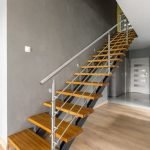Where do the lights stand in home decor, and how do they influence the overall ambiance and mood of a space? Lighting plays a crucial role in setting the scene and creating the right atmosphere within a home. Whether it’s functional or aesthetic, the way we illuminate our living spaces can make a significant impact on the overall decor.
The impact of lighting on home decor goes beyond just providing visibility in a room – it can create a certain mood or ambiance that enhances the overall feel of a space. From warm, soft lighting for cozy evenings to bright, vibrant lighting for productivity, different light sources can set the tone for different activities and moods within a home.
In this article, we will delve into the various aspects of lighting in home decor, from functional illumination to using lights as decorative elements. We will explore trendy lighting fixtures such as chandeliers and pendant lights, and discuss how lighting can be seen as art with unique and statement-making pieces. Additionally, we will also look at the role of natural light and how to find the perfect balance by mixing different light sources in home decor.
The Impact of Lighting on Home Decor
The right lighting can make all the difference in home decor, setting the mood and ambiance of a space. In fact, where do the lights stand in home decor is a critical question to consider when designing or updating any living space. Different types of lighting can create varying atmospheres and serve different functional purposes.
One key factor to consider when using lighting to enhance home decor is the color temperature of the bulbs. Warm white light (around 2700-3000 Kelvin) creates a cozy and inviting atmosphere, perfect for living rooms and bedrooms. On the other hand, cool white light (3500-4100 Kelvin) is ideal for task-oriented spaces like kitchens and offices as it provides better visibility.
Additionally, dimmer switches can be installed to control the brightness level of lights in various rooms, allowing for versatility in setting the mood. For example, being able to dim overhead lights during a dinner party can help create a more intimate and relaxed atmosphere.
| Types of Lighting | Recommended Rooms |
|---|---|
| Warm White Light (2700-3000K) | Living rooms and bedrooms |
| Cool White Light (3500-4100K) | Kitchens and offices |
It’s important to remember that lighting not only serves a functional purpose but can also be used as a decorative element in home decor. From eye-catching pendant lights over kitchen islands to elegant chandeliers in dining rooms, trendy lighting fixtures have become an essential part of interior design. These fixtures not only provide ample light but also add character and style to a room, further enhancing its overall decor.
Functional Lighting
When it comes to home decor, functional lighting plays a crucial role in illuminating different spaces within the home. Whether it’s the kitchen, living room, bedroom, or bathroom, having the right type of lighting is essential for both practical and aesthetic purposes. Here are some key areas in the home to consider when incorporating functional lighting:
- Kitchen: In the kitchen, task lighting is essential for activities such as food preparation and cooking. Under-cabinet lights can provide focused illumination on countertops, while pendant lights over the kitchen island can offer both function and style.
- Living Room: The living room is a multifunctional space where a mix of lighting types is important. Overhead lighting can provide ambient light for everyday activities, while table lamps and floor lamps can offer task lighting for reading or accentuating certain areas of the room.
- Bedroom: When it comes to bedroom lighting, it’s all about creating a relaxing and comfortable atmosphere. Bedside table lamps are ideal for providing soft ambient light for nighttime reading or winding down, while overhead fixtures can offer general illumination.
- Bathroom: In the bathroom, task lighting around the vanity area is essential for grooming tasks such as applying makeup or shaving. Wall sconces on either side of the mirror can help minimize shadows and provide even illumination.
By strategically incorporating different types of functional lighting in these key areas of the home, you can enhance both the functionality and aesthetics of each space where do the lights stand in home decor.
Remember that functional lighting doesn’t have to be purely utilitarian – it can also serve as decorative elements that complement your overall home decor style. From sleek recessed lights to stylish track lighting systems, there are plenty of options available to suit different design preferences.
Aesthetic Lighting
Accent Lighting
One way to incorporate aesthetic lighting into home decor is through accent lighting. This type of lighting is used to highlight specific features or areas within a room, such as artwork, architectural elements, or even indoor plants. By strategically placing accent lights, you can draw attention to these focal points and create a visually appealing atmosphere.
Mood Lighting
Another aspect of using lights as decorative elements is creating mood lighting. This involves setting the tone and ambiance of a room through the use of different light intensities and color temperatures. For example, warm-toned lights can create a cozy and intimate feel in living spaces, while cooler tones may be more suitable for work areas or kitchens. By utilizing dimmer switches and smart lighting systems, homeowners can easily adjust the mood of their spaces according to their preferences.
Creative Light Fixtures
Incorporating unique and artful light fixtures is also a popular trend in home decor. From quirky table lamps to sculptural pendant lights, there are endless options for using creative light fixtures as decorative elements in various rooms. These eye-catching pieces not only provide illumination but also serve as conversation starters and focal points within interior design schemes.
By paying attention to these aspects of aesthetic lighting, homeowners can add depth and character to their spaces while contributing to overall home decor goals.
Trendy Lighting Fixtures
When it comes to home decor, lighting fixtures play a crucial role in enhancing the overall appeal of a space. From chandeliers to pendant lights, the right choice of trendy lighting fixtures can elevate the aesthetic of any room. In this section, we will explore the various options for trendy lighting fixtures and how they can be incorporated into home decor to create a stylish and inviting atmosphere.
Chandeliers: Making a Statement
Chandeliers are not just reserved for grand ballrooms or formal dining rooms. They have evolved into versatile lighting fixtures that can make a bold statement in any room. Whether it’s a modern crystal chandelier in a living room or a rustic farmhouse chandelier in a kitchen, these eye-catching pieces add an element of luxury and elegance to the space.
Pendant Lights: Functional and Stylish
Pendant lights are another popular choice for contemporary home decor. These hanging light fixtures come in a variety of shapes, sizes, and styles, making them suitable for different areas of the home. Whether it’s clustered over a kitchen island or used as bedside lighting in the bedroom, pendant lights not only provide functional illumination but also contribute to the visual appeal of the space.
Unique Light Fixtures: Making a Personal Statement
In addition to chandeliers and pendant lights, there is also an increasing trend towards incorporating unique and statement-making light fixtures into home decor. From sculptural floor lamps to artistic wall sconces, homeowners are now seeking out one-of-a-kind pieces that double as works of art. These unique light fixtures serve as focal points in a room, adding personality and character to the overall design.
Lighting as Art
When it comes to home decor, lighting can do much more than just brighten up a space. In fact, where do the lights stand in home decor is a question that many interior designers and homeowners are asking themselves. More than just functional elements, lights can also serve as art pieces that add personality and style to a room.
Incorporating unique and statement-making lighting pieces into home decor can truly elevate the overall look and feel of a space. Whether it’s a modern chandelier that becomes the centerpiece of a dining room or a sculptural floor lamp that adds drama to a living area, these lighting fixtures can become conversation starters and focal points in any room.
One popular trend in home decor is the use of customizable or DIY lighting fixtures. This allows homeowners to express their creativity and individuality by choosing or even creating their own unique lighting pieces. From custom-made pendant lights to handcrafted table lamps, there are endless possibilities for incorporating one-of-a-kind lighting as art in home decor.
Not only do unique and statement-making lighting pieces add visual interest to a room, but they also contribute to the overall ambiance and mood. Whether it’s creating a cozy atmosphere with warm Edison bulbs or making a bold statement with oversized pendant lights, these artful lighting choices play an essential role in shaping the look and feel of any space.
| Lighting Type | Impact on Home Decor |
|---|---|
| Modern Chandelier | Becomes the centerpiece of a dining room |
| Sculptural Floor Lamp | Adds drama to a living area |
| Customizable/DIY Lighting Fixtures | Allows for personal expression and individuality in home decor |
| One-of-a-kind Lighting Pieces | Adds visual interest and contributes to ambiance |
The Role of Natural Light
Natural light plays a crucial role in home decor, as it not only illuminates the space but also creates a warm and inviting ambiance. Harnessing the power of sunlight can significantly impact the overall look and feel of a home, making it an essential element to consider when designing the interior. Here are some ways you can utilize natural light to enhance your home decor:
- Position furniture strategically to allow natural light to flow into the room
- Use sheer curtains or blinds to filter light and create a soft glow
- Place mirrors opposite windows to reflect natural light and make rooms appear larger
In addition to enhancing the aesthetic appeal of a space, natural light also has numerous health benefits. Exposure to sunlight can improve mood, boost Vitamin D production, and regulate sleep patterns. Therefore, incorporating natural light into your home decor not only adds visual appeal but also contributes to your overall well-being.
Maximizing natural light in your home decor can also reduce energy consumption by relying less on artificial lighting during daylight hours. This not only benefits the environment but also helps save on electricity costs. Therefore, when considering how lights stand in home decor, natural light should be at the forefront as both a practical and aesthetic element.
Finding the Perfect Balance
When it comes to illuminating your home, finding the perfect balance is essential for creating a cohesive and well-designed space. Mixing different light sources in home decor can truly elevate the ambiance and functionality of each room. Whether it’s natural light streaming in through windows, ambient lighting creating a warm glow, or task lighting providing focused illumination, the right balance of these elements can enhance the overall look and feel of your home.
One way to achieve this balance is by incorporating various types of lighting fixtures throughout your space. For example, combining overhead chandeliers with wall sconces or floor lamps can help distribute light evenly and create a layered effect. This not only adds depth to the room but also ensures that there are no dark corners or areas that are overly bright.
Furthermore, mixing different light sources allows for flexibility in controlling the mood and atmosphere of a room. By having multiple options for lighting, you can easily adjust the brightness and intensity based on specific needs or activities. For instance, during the evening when natural light is no longer available, having a combination of ambient and task lighting can make it easy to transition from general relaxation to reading or working on tasks that require more focused illumination.
In addition to function, mixing different light sources also contributes to the aesthetic appeal of your home decor. By strategically placing various types of lighting throughout your space, you can highlight architectural features, artwork, or other decorative elements within each room.
This creates visual interest and draws attention to key focal points within your home. Ultimately, finding the perfect balance of different light sources in home decor is about enhancing both the functionality and aesthetics of your living spaces in a harmonious way.
Conclusion
In conclusion, lighting plays a crucial role in home decor, setting the mood and ambiance while also serving functional and aesthetic purposes. The right lighting fixtures can transform a space, adding character and style to the overall design. From trendy chandeliers to unique statement pieces, there are endless options for incorporating lights into your home decor.
Functionally, lighting is essential for illuminating different spaces in the home, from task lighting in the kitchen to ambient lighting in the living room. Aesthetic lighting also adds a decorative element to the home, serving as both functional and stylish decor. Finding the perfect balance between natural and artificial light sources is key to creating a well-lit and inviting space where do the lights stand in home decor.
It’s important to consider not only the functionality of lighting but also its visual impact. Whether it’s harnessing the power of natural light or incorporating unique light fixtures as art pieces, illuminating your home with purpose and style can truly elevate your living spaces. By mixing different light sources, you can create a harmonious balance that enhances the overall design of your home.
Frequently Asked Questions
Where Should Lights Be Placed in a Room?
Lights in a room should be placed strategically to ensure even and adequate illumination. Overhead lights can provide general lighting, while lamps can be placed in corners or near seating areas to provide task lighting and create ambiance.
Where Should I Put Lights in My Room?
When deciding where to put lights in your room, consider the function of the space. For example, a desk or reading nook may require a task lamp, while a dining area may benefit from a statement pendant light. It’s important to balance various light sources for functionality and aesthetics.
Where Should Light Be Placed?
Light should be placed in a room in such a way that it adequately illuminates the entire space. This may involve using a combination of overhead lights, lamps, and sconces to evenly distribute light and create the desired ambiance within the room.

I’m thrilled to be your companion on this exciting journey through the world of home decor and design. With a passion for turning houses into homes and a keen eye for the finer details, I’m here to help you transform your living spaces into beautiful, functional, and meaningful havens.





